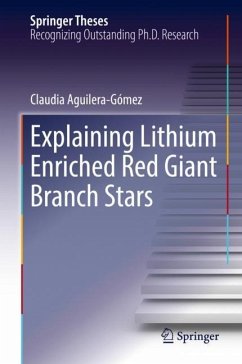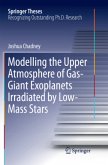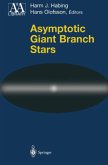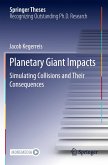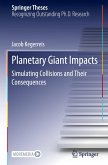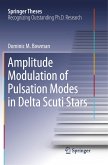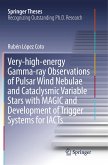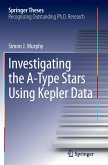This thesis provides new insights into the seemingly anomalous ubiquity of lithium-rich red giant stars. The theory of stellar evolution, one of the most successful models of modern astrophysics, predicts that red giant stars should display negligible levels of lithium (Li) on their surfaces. However, Li-rich giants, defined as those showing more than three times the Li content of the Sun, are found everywhere astronomers look in apparent defiance of established theory.
The author addresses this problem, analyzing the different possible explanations for such an anomaly, which include interaction with a binary companion, the production of Li in the interior of the star with its subsequent transport to stellar exteriors, and the stellar interaction with planets. The author focuses on this last possibility, where the Li enrichment may be due to the ingestion of planets or brown dwarfs as the stars in question grew in size while becoming giants. She shows that this processis indeed able to explain an important fraction of giants with Li levels above the three times solar threshold, but that some other mechanism is needed to explain the remaining fraction. While this is an important discovery in its own right, the result that makes this thesis groundbreaking is its demonstration that the threshold between Li-normal and Li-rich is mass dependent rather than a fixed proportion of the Sun's content. This corrects a fundamental misapprehension of the phenomenon and opens up a new framework in which to understand and solve the problem.
Finally, the author presents interesting observational applications and samples with which to test this new approach to the problem of Li enrichment in giants.
The author addresses this problem, analyzing the different possible explanations for such an anomaly, which include interaction with a binary companion, the production of Li in the interior of the star with its subsequent transport to stellar exteriors, and the stellar interaction with planets. The author focuses on this last possibility, where the Li enrichment may be due to the ingestion of planets or brown dwarfs as the stars in question grew in size while becoming giants. She shows that this processis indeed able to explain an important fraction of giants with Li levels above the three times solar threshold, but that some other mechanism is needed to explain the remaining fraction. While this is an important discovery in its own right, the result that makes this thesis groundbreaking is its demonstration that the threshold between Li-normal and Li-rich is mass dependent rather than a fixed proportion of the Sun's content. This corrects a fundamental misapprehension of the phenomenon and opens up a new framework in which to understand and solve the problem.
Finally, the author presents interesting observational applications and samples with which to test this new approach to the problem of Li enrichment in giants.

